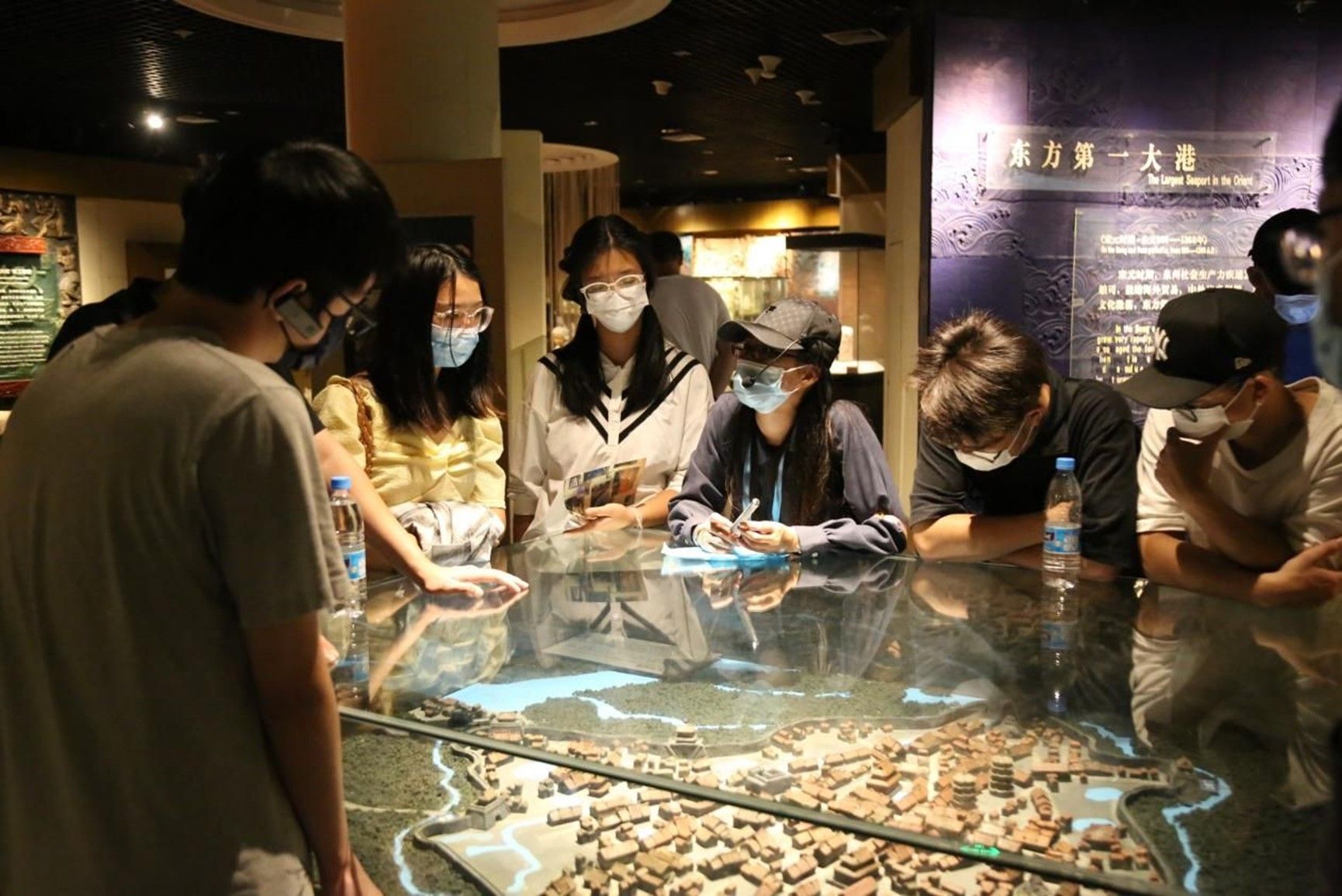A study camp was hosted by the Student Affairs Office and undertaken by the School of Architecture, HQU. The campers are mainly HQUers from Taiwan, China. Altogether 37 teachers and students from both sides of the Taiwan Straits went to explore the intangible cultural heritage in Quanzhou from November 19th to 20th.
During the two-day study tour, the students left footprints in various museums, temples, mountains and rivers of historical charm in Quanzhou.
At the Quanzhou Intangible Cultural Heritage Museum, guided by the commentator, students appreciated the works of intangible cultural heritage such as Shadow Carving, Paper Woven Painting, Floral Lanterns, Wanying Tea, Quanzhou Marionette and Gaojia Opera. Watching the on-site performances by inheritors, they felt the charm of intangible culture. During their museum tour, they well understood how Quanzhou (known as Zayton then) emerged to be the largest oriental port, creating the glorious Quanzhou history and culture. At the Quanzhou Sanhangdao Art Museum, students painted faces of glove puppets and enjoyed four intangible cultural heritage performances to feel the charm of Quanzhou culture at close range, i.e. Nanyin Music, Story in Minnan dialect, Dance of Huoding Gong and Po (husband and wife dancing carrying a firing wok) and Quanzhou Marionette.
At the Kaiyuan Temple, students visited Zhenguo Pagoda and Renshou Pagoda, the tallest twin stone pagodas in China at present, listened to the beautiful legends of Sanglian (mulberry and white lotus) Dharma and told the different Buddhist culture from other places. The Tianhou Palace in Quanzhou is the largest temple with the highest rank at home and abroad to worship Mazu, a Chinese sea goddess. At the “gathering place for tourists from far”, they enjoyed the Mazu culture at close range. They also watched the Shaolin Kung Fu performances by monks and knew the unique and profound boxing system composed of Wuzu Boxing, Tàizǔquán, White Crane Boxing and Wu Mei Hua Quan at the Shaolin Temple. They then perceived the connotation of traditional Chinese martial arts and the history and culture of Quanzhou.
Students also climbed to the top of the Jiuri Mountain, which enjoys a reputation of “No stone in the mountain is not engraved with words”. The stone carvings and inscriptions along the mountain path tell the prosperous maritime trade history in Quanzhou and display the openness and inclusiveness of the spirit of the Maritime Silk Road.
Based on the concept of “One family on both sides of the Taiwan Straits”, Huaqiao University has held a series of activities on the study of Zhuzi culture and intangible heritage culture for students from Taiwan to further understand Fujian, and promote cultural exchanges between Fujian and Taiwan in the fields of southern Fujian culture, Zhuzi culture, folk customs and beliefs, etc. More folk culture study will also be held in the future, so as to strengthen cross-straits exchanges between the youths and jointly inherit and spread the excellent traditional Chinese culture.

Painting faces of glove puppets

Learning the historical changes of the ancient Quanzhou

Visiting the Quanzhou Intangible Cultural Heritage Museum
(Editor: Cai Juntao)
 0086-595-22693961 0086-592-6160091
0086-595-22693961 0086-592-6160091 fao@hqu.edu.cn Contact Us | Site Map
Undergraduate Admission
fao@hqu.edu.cn Contact Us | Site Map
Undergraduate Admission  0086-595-22695678
0086-595-22695678  hqdxjwzs@sina.com
Graduate Admission
hqdxjwzs@sina.com
Graduate Admission  0086-592-6161272
0086-592-6161272  hqugraduates@163.com
Contact Us
|
Site Map
hqugraduates@163.com
Contact Us
|
Site Map